Thai Food Dishes: Basic Overview
Common Ingredients
Common Cooking Methods
Courses
Meals
Key Taste
Eating Etiquette
Meal Presentation
Culinary Festivals
Influence and Fusion
Popular Types of Thai Dishes
-
Rice Dishes
There are many rice dishes in Thai cuisine, including both sweet and savory varieties.
Rice is typically cooked with meat, vegetables, and various condiments.
Thai rice dishes have a great depth of flavor and serve as the main course of a sit-down meal or street food.
-
Stir-fries
Thai stir-fries are significantly influenced by Chinese cooking traditions.
Stir-fried noodles account for a large proportion of Thai stir-fries.
Most stir-fried dishes feature vegetables and protein-rich ingredients like tofu, meat, or seafood.
-
Curries
Thai curries have many delicious varieties, which are influenced by both Indian cooking and local traditions.
Most curries use curry pastes and feature numerous spices and fresh herbs.
Meat or seafood, vegetables, and coconut milk are common ingredients in Thai curries.
Compared to curries from other countries, the Thai version is typically spicier and has a more soup-like consistency.
-
Soups
Soups are among the most important dish categories in Thai cuisine.
Thai soups usually come with bold tones of sweetness, sourness, spiciness, and umami.
Most Thai soups have a liquid consistency and go well with rice.
Common ingredients for soups in Thailand are meat or seafood, leafy vegetables, herbs, and local condiments like fish sauce.
-
Salads
Thai salads have strong flavors and often serve as the main course.
Many salads feature savory meat and crunchy vegetables, such as green papayas.
Spices, fresh herbs, and savory condiments appear in many Thai salad recipes.
-
Snacks
Thai snacks include many types of hand-held dish types, such as bite-sized fried dishes and rolls.
These snacks are mostly based on protein-rich ingredients and dough.
-
Desserts
Thai desserts come in various forms, from hand-held specialties to dishes served on plates.
These desserts are often sweetened with sugar and enriched with coconut milk.
Seasonal fruits are popular ingredients for Thai desserts.
Thai dishes are a rich tapestry of flavors and ingredients characterized by their use of aromatic herbs, spices, and proteins.
Many dishes in this Southeast Asian nation often incorporate curry pastes made from chilis, garlic, shrimp paste, and coconut milk, though some regional variations are different.
Thai food delicacies include tom (boiled delights), yam (spicy salads), tam (pounded dishes), kaeng (curries) and stir-fries. There are four fundamental flavors in these dishes: sweet, spicy, sour, and salty.
Many Thai dishes are shaped by interactions with Chinese specialties, while neighboring cuisines, such as food offerings from Cambodia, also influence the development of Thai gastronomy.
Begin the journey by learning about traditional Thai food and what it entails, such as its core attributes, global popularity, and healthy aspects.
I will introduce 37 popular dishes of Thailand and go over each one’s ingredients, flavor, texture, history, and other facts.
In addition, you’ll also learn some factors that make up the appeal of Thai dishes, Thai street food culture, popular beverages for pairing local dishes, and the basics of Thai table manners.
Let’s get started with 37 famous Thai dishes below:
37 Most Popular Thai Dishes with Filters
There are 37 mouth-watering Thai dishes worth discovering. I will help you explore them with my interactive filters; there are options regarding alphabetical sorting, main ingredients, taste, cooking methods, dish types, courses, and global popularity.
For more information, use the additional filters based on specific culinary styles, such as traditional, national, street food, and exotic options.
Pad Thai
- National
- Street Food
- Traditional
Pad thai, also known as phad thai or phat thai, is a stir-fried noodle in Thailand. It was initially called guay teow pad thai, with “guay teow” meaning “rice noodles.” The dish is also influenced by Chinese cuisine.
Pad Thai includes rice noodles tossed with eggs, tofu or shrimp, bean sprouts, and peanuts. This stir-fried noodle has a sweet, sour, and salty taste achieved through tamarind paste, fish sauce, and sugar.
Pad Thai is influenced by Chinese cuisine and is usually cooked in a wok over high heat. Quick cooking is necessary to retain the freshness of the ingredients of this noodle stir-fry.
More than a mere restaurant dish, pad Thai is sold by street vendors throughout Thailand. It has also gained international fame for its delicious blend of flavors and texture.
Khao Pad
- Street Food
- Traditional
Khao pad, also known as khao phat or Thai fried rice, is a Thai fried rice dish from the central region.
The term “khao phat” also implies the ingredients and cooking methods, which are “khao” for “rice” and “phat” (or “pad”) for “stir-fried.”
Typical ingredients in khao pad are meat (like chicken, pork, or shrimp), eggs, vegetables, and seasonings like nampla (fish sauce), soy sauce, spices, or herbs. Tofu is a common choice for vegetarian-friendly versions.
Locals normally use jasmine rice instead of regular long-grain rice to make this fried rice delicacy. Khao pad sapparod is a famous variation where rice is served in half a pineapple shell.
Khao Niao Mamuang
- Street Food
- Traditional
Khao niao mamuang, or mango sticky rice, is a popular Thai dessert. It combines sweet ripe mangoes and glutinous rice (sticky rice).
To prepare this Thai dessert, the creamy and rich coconut milk sauce is poured over the top or served on the side of the chewy rice.
Thai mango sticky rice is especially popular during the mango season and is a staple in street food stalls and upscale restaurants nationwide.
Tom Yum
- National
- Traditional
Tom yum, or tom yam, is a Thai soup known for its hot and sour flavors. The name “tom yum” is derived from two words: “tom,” which refers to the boiling process, and “yam,” which means “mixed.”
The enticing aroma of tom yum comes from various ingredients like lemongrass, kaffir lime leaves, galangal, chilis, shallots, and garlic. These aromatics are sliced, pounded, and simmered.
The tom yum base is often made from water (or chicken broth) and coconut milk, with seasonings like fish sauce, lime juice, and nam phrik phao (Thai chili sauce).
Tom yum often includes meat like fish, shrimp, mixed seafood, pork, or chicken. Vegetables like onions and tomatoes are also commonly added. Mushrooms, usually straw or oyster mushrooms, are used in modern versions.
The most famous versions are tom yum goong (with shrimp), tom yum gai (with chicken), and tom yum nam khon (a creamy version).
Tom Kha Kai
- Traditional
Tom kha kai, also known as tom kha gai, is a Thai sour and spicy soup made with coconut milk. It dates back to the late 19th century and has evolved over time.
Initially, tom kha kai featured duck and young galangal in a coconut milk-based curry, but chicken has since become the more common protein, leading to the name “tom kha kai” (meaning “chicken galangal soup”).
Tom kha kai’s typical ingredients include coconut milk, kaffir lime leaves, lemongrass, galangal (or sometimes ginger), and chili. Common seasonings are fish sauce and lime juice.
Besides chicken, there are many tom kha variations that feature other main ingredients, such as seafood (tom kha thale), mushrooms (tom kha het), pork (tom kha mu), and even tofu (tom kha taohu).
Thanks to coconut milk, tom kha kai has a creamier texture and a milder, sweeter taste than tom yum.
Green Curry
- Traditional
Green curry (referred to as “kaeng khiao wan”) is a spicy and aromatic Thai curry hailing from the central area of the country.
The name “green” was derived from the vibrant green color of green chilis used in the curry.
Meanwhile, the term “sweet” in “kaeng khiao wan” (wan means “sweet”) refers to the particular shade of green, not the flavor profile.
Green curry was created in the early 20th century and has no fixed ingredient list, but it typically includes coconut milk, protein, various vegetables, and green curry paste. Thai basil, kaffir lime leaves, and cilantro are aromatics responsible for the green shade of the dish.
To enjoy green curry, pair it with rice or round rice noodles (khanom chin). Its taste is not sweeter than other curries but generally has more spiciness than its red counterpart.
Red Curry
- Traditional
Red curry, known as “kaeng phet,” is a spicy Thai dish made with a red curry paste, coconut milk, and meat (like chicken, beef, pork, shrimp, and duck) or tofu.
Kaeng phet usually has a soup-like consistency.
Key ingredients of the red curry paste are a pounded mix of dried red spur chilis, galangal, shrimp paste, kaffir lime leaves, and lemongrass. The red color of the curry comes from dried red spur chilies.
You can find ready-made red curry paste in markets, where they are available in jars and bottles. The paste is also a core flavoring agent in other Thai dishes, like tod man pla (fish cake) and sai ua (Chiang Mai sausage).
Yellow Curry
- Traditional
Yellow curry is a popular Thai dish with a milder and less oily taste than other curries. Drawing inspiration from British naval cuisine, it originally incorporated curry powder, an Anglo-Indian invention.
Today, yellow curry blends various spices and herbs like cumin, turmeric, fenugreek, coriander, bay leaf, lemongrass, etc.
Popular main ingredients for yellow curry are chicken, beef, and starchy vegetables (like potatoes), while many variations include duck, tofu, shrimp, fish, and vegetables.
Enjoy your yellow curry alongside steamed rice or round rice noodles for a fulfilling meal! You can easily find this dish in restaurants nationwide, especially in Western Thailand.
Phanaeng
- Traditional
Phanaeng, also spelled as phanang or panang, is a traditional red Thai curry known for its thick consistency and sweet and salty flavor profile.
The curry paste used in Phanaeng is a complex blend of dried chili peppers, lemongrass, galangal, coriander root, makrut lime zest, shrimp paste, peanuts, and more.
Panang curry is mostly prepared with thin strips of meat. Unlike other Thai curries, Phanaeng has a more viscous consistency due to its minimal liquid content. Enjoy the curry with rice for a hearty meal!
Khao Soi
- Traditional
Khao soi (or khao soy) is a noodle soup dish you should try when visiting Thailand, especially in the Northern region.
Khao soi originated from the Chin Haw community and was inspired by a signature dish from Burmese cuisine – coconut curry. Its creation dates to the late 19th and early 20th centuries.
Hand-cut rice or egg noodles, coconut milk, and a curry soup base are the building blocks of khao soi. In northern Thailand, some vendors still hand-cut the noodles in the traditional manner. Khao soi is also common in Laos and Myanmar.
Massaman Curry
- Traditional
Massaman curry is a rich and mildly spicy Thai curry. It is traditionally made with meat like chicken, beef, or duck, although tofu versions are also available for vegetarians and vegans.
The name “Massaman” is thought to be a corruption of the term “mosalman,” an archaic Persian word meaning “Muslim.” This reflects the dish’s Muslim roots and the influence of Islamic dietary laws on its ingredients and preparation.
A delightful fusion of flavors, massaman curry combines ingredients from Persia, the Indian subcontinent, and the Malay Archipelago with traditional elements to create a distinctive curry paste.
Massaman curry consists of coconut milk, potatoes, onions, peanuts, and a diverse spice blend, giving it a rich and creamy texture.
In 2011, CNNGo named massaman curry the world’s tastiest food, a title it retained in their 2018 update, while a reader’s survey ranked it at number ten.
Som Tam
- National
- Street Food
- Traditional
Som tam, or green papaya salad, is a notable Thai salad with roots in the Isan region of Northeast Thailand. It is made from shredded unripe papaya, yardlong beans, chili peppers, lime, brined crab, and sometimes hog plum.
To make som tam, all the ingredients are mixed and pounded in a mortar to blend the flavor. Take a bite of som tam, and you will feel the sourness of lime, the spiciness of chili, the umami from fish sauce, and most importantly, the crispness of green papaya.
Laab
- Street Food
- Traditional
Laab (also spelled larb) is a famous Thai meat salad from northeastern and northern areas, such as Isan and Lanna.
Though the origin of laab is in Laos, there is a difference between the Thai and Lao versions. The former does not use fish sauce and is not sour, as it omits lime juice or other souring agents.
In Thailand, laab combines minced meat (like chicken, beef, duck, turkey, pork, or fish) with dried spices like cumin, cloves, long pepper, star anise, prickly ash seeds, and cinnamon.
Laab is served either raw, known as “laab dip,” or cooked, referred to as “laab suk.” If blood is omitted from the stir-fried version, the dish is called “laab khua.”
Laab is usually enjoyed with sticky rice or raw and fresh vegetables and herbs. Locals consider this dish good fortune and serve it during special occasions like the New Year, housewarming, weddings, and Buddhist festivities.
Yam Nuea Yang
- Street Food
- Traditional
Yam nuea yang is a traditional Thai salad-like dish featuring sliced grilled beef as a key ingredient. Sliced fresh shallots or onions, fish sauce, lime juice, sugar, chili peppers, and various herbs are other ingredients.
Yam nuea yang is typically served as a main dish in a Thai buffet-style meal. The ideal accompaniment of this beef salad is rice or round rice noodles.
Yam Pla Duk Fu
- Traditional
Yam pla duk fu is a Thai-style salad made with crispy fried catfish. The catfish is usually deep-fried until it becomes fluffy and crispy, then it’s mixed with a spicy and tangy green mango salad.
You can experience a spicy and tangy taste with yam pla duk fu. The salad is best consumed immediately after its preparation to fully feel the crispiness of deep-fried catfish.
Yam pla duk fu is often used as an appetizer, side dish, or main dish when paired with steamed rice.
Tod Man Pla
- Street Food
- Traditional
Tod man pla is a Thai fish cake mainly served as an appetizer or a street food dish. Its main ingredients are minced or ground fish, red curry paste, kaffir lime leaves, and other aromatic herbs. The mixture is then shaped into small patties and deep-fried until golden brown.
The secret to upgrading tod man pla’s deliciousness is nam chim (various dipping sauces in Thai cuisine) and a sweet and spicy cucumber relish.
Thapthim Krop
- Street Food
- Traditional
Thapthim krop, or tub tim grob, is a well-known Thai dessert. It consists of crunchy water chestnuts coated in tapioca flour and then soaked in a sweetened coconut milk syrup.
Thapthim krop features jewel-like water chestnuts dyed with red to resemble pomegranate seeds. The name “thapthim” means “ruby,” referring to this stunning appearance.
Thai people usually serve thapthim krop with ice cubes. In 2019, CNN Travel voted this Thai sweet treat as one of the world’s 50 famous desserts.
Kanom Krok
- Street Food
- Traditional
Kanom krok is a coconut pancake made from a batter of rice flour, coconut milk, and sugar. It is cooked in a special cast-iron pan to create a small, round shape before being topped with scallion, corn, or shrimp.
Freshly fried kanom krok is a popular street food, famous for its crispy exterior and sweet, creamy interior. In Thai, “khanom krok” translates to “snack mortar,” describing the interesting shape of the pancake.
Mu Ping
- Street Food
- Traditional
Mu ping refers to Thai grilled pork skewers, a popular street food that gained prominence around 1952. “Mu” translates to pork, while “ping” signifies grilling.
Mu ping includes marinated pork in a mixture of fish sauce, soy sauce, oyster sauce, and palm sugar. These succulent pork slices strike a delightful balance between savory and sweet.
Mu ping is a versatile meal for breakfast, lunch, and dinner. But street vendors usually offer these skewers in the morning, with sticky rice and a spicy sauce called nam chim chaeo on the side.
Pad See Ew
- Street Food
- Traditional
Pad see ew is a stir-fried noodle dish popularly consumed as a street food dish and main dish in Thailand. Its name translates to “fried with soy sauce.”
Pad see ew has its roots in China, where the technique of stir-frying noodles originated. The chewy rice noodles are stir-fried with vegetables, meat (or tofu), and eggs.
The key condiment used in pad see ew is soy sauce, which sticks to the noodles and gives them a slightly charred, smoky flavor.
Different pad see ew variations include different types of noodles, such as thin rice noodles or egg noodles (in the Southern region). Most versions feature ground white pepper, lime juice, and chili flakes as garnishes.
Drunken Noodles
- Street Food
- Traditional
Drunken noodles, or pad kee mao, are a spicy Thai stir-fry. Contrary to what the name suggests, this noodle dish doesn’t contain alcohol; instead, it is a common hangover cure, according to a popular theory.
Pad kee mao is made using broad rice noodles, garlic, fish sauce, soy sauce, and a choice of meat, seafood, or tofu. It also contains bean sprouts or other vegetables and chili peppers.
Compared to pad see ew, drunken noodles are spicier and feature a lighter-colored sauce with less sweetness.
Gai Tod
- Street Food
- Traditional
Gai tod is a Thai deep-fried chicken dish. The chicken is marinated in spices, herbs, and sauces before being coated with flour or rice flour and deep-fried until crispy.
Chicken pieces in gai tod are crunchy on the outside and tender on the inside. Their accompanying sauces range from a simple sweet and sour sauce to a more complex spicy tamarind or fish sauce-based dip.
Gai tod is less greasy than its Western-style counterparts and is a great dish to pair with sticky rice.
A versatile snack, appetizer, and street food dish, gai tod is found in many Thai restaurants worldwide.
Poh Pia Tod
- Street Food
- Traditional
Poh pia tod is a famous deep-fried spring roll in Thailand. It is typically filled with vegetables like cabbage, carrots, bean sprouts, and optional protein sources like shrimp, chicken, or pork.
There are also various herbs and spices in poh pia tod, including garlic, ginger, and sometimes basil or cilantro. The spring roll wrappers are made from rice paper or wheat flour.
To enjoy poh pia tod, dip it into the sweet chili sauce! This spring roll dish is a popular appetizer or sold as a deep-fried snack on the streets.
Khao Niao
- Traditional
Khao niao is a traditional Thai dish featuring glutinous rice as the main star. This rice dish is great to enjoy with various savory and sweet dishes. Khao niao is a staple dish that appears in every meal of the people in the Isan region.
Thai glutinous rice can be either milled or unmilled, with the bran removed or not. Milled glutinous rice is white and fully opaque, while the bran can give unmilled glutinous rice a purple or black color.
Phat Kaphrao
- National
- Street Food
- Traditional
Phat kaphrao, also known as pad krapow or kaprao, is a popular Thai dish consisting of meat (like pork, chicken, beef, or seafood) stir-fried with holy basil and garlic. The use of holy basil gives this dish an enticing flavor and aroma.
While holy basil has a long history in Thai cuisine, modern phat kaphrao was first prepared only in the mid-20th century.
When enjoying this aromatic stir-fry, serve it with rice and optionally top it with fried eggs. You will feel various flavors of spiciness, sweetness, and savoriness.
Khao Mok Gai
- Traditional
Khao mok gai is the Thai version of chicken biryani that is popular among the Muslim-Thai community. The dish features marinated chicken cooked with rice, spices, and herbs. The turmeric-based spice marinade gives khao mok gai its distinct yellow color.
The rice is usually cooked in the same pot as the chicken, allowing the flavors to meld together in khao mok gai. Its popular accompaniments are fried shallots, raisins, cucumbers, boiled eggs, and a spicy, tangy sauce.
Khao mok gai is a halal dish introduced to Thailand centuries ago by Persian traders.
Sai Ua
- Traditional
Sai ua is a famous grilled pork sausage with English names like Northern Thai sausage or Chiang Mai sausage. “Sai” and “ua” mean “intestine” and “stuff,” respectively.
Besides pork, beef, chicken, or even fish is sometimes used to make sai ua. The minced meat is mixed with herbs, spices, and kaeng khua red curry paste.
Grilled sai ua goes well with sticky rice and other side dishes, creating a fantastic snack or appetizer combo. Previously a homemade creation, this sausage is now readily available in stores.
Tom Klong
- Traditional
Tom klong is a sweet and sour Thai soup prepared with dried or smoked fish and various aromatic herbs. Tamarind juice, shallots, lemongrass, galangal, and kaffir lime leaves are common seasonings for bringing out the flavor of this soup.
Also known as tom hok ue, tom klong shares many similarities with tom yum. The biggest distinction between the two is that tom klong features roasted or dried herbs.
Nam Tok
- Street Food
- Traditional
Nam tok is a Thai grilled steak salad originating in the Isan region and Laos. Its name translates to “falling water” or “waterfall,” a nod to the succulent juices dripping from the meat.
“Waterfall beef salad” is a common English translation for nam tok. Thai people usually serve this dish on a bed of fresh vegetables and sticky rice.
Interestingly, nam tok also refers to a spicy Central Thai soup with pig or cow blood. Therefore, read the menu carefully to know what kind of nam tok you want to get when eating at a Thai restaurant.
Khao Kha Mu
- Street Food
- Traditional
Khao kha mu, or kha mu, is a Thai dish of braised pork legs served on a bed of rice with sides like blanched vegetables, pickles, and boiled eggs. It is an immensely popular street food dish and entree influenced by Chinese cuisine.
The richness of pork legs cooked in broth with various spices imparts a robust flavor to khao kha mu. Its melt-in-the-mouth texture is another wonderful highlight.
Khao Kluk Kapi
- Traditional
Khao kluk kapi is a Thai dish prepared by frying rice with shrimp paste, meat (pork, shrimp, or sausage), thinly sliced mangoes, shallots, eggs, and various spices.
The use of diverse ingredients gives khao kluk kapi a complex flavor profile. The strong aroma and distinct savoriness of shrimp paste are the defining features of this Thai fried rice dish.
Khao kluk kapi became popular in the early 19th century. Locals serve it with so many vegetables that they sometimes describe the dish as a salad.
Malang Tod
- Exotic
- Street Food
- Traditional
Malang tod, or fried insects, is an interesting street food dish in Thailand. Popular varieties include grasshoppers, silkworms, and crickets, which are often served with flavorful dipping sauces.
Fried insects are considered a protein-rich snack and are sold at many Thai street food stalls. Cold beer is the common beverage to accompany them.
Kai Yang
- Street Food
- Traditional
Kai yang, also known as gai yang or gai ping, is a Thai grilled chicken dish hailing from the Isan region. It involves marinating chicken in a rich spice mixture and grilling the meat to aromatic perfection.
Crispy outside yet juicy inside, kai yang goes well with sticky rice, som tam, fresh vegetables, and hot sauces. Like other Isan dishes, kai yang has many things in common with similar dishes in Laos.
Goong Ten
- Exotic
- Traditional
Goong ten is an exotic Thai dish prepared by seasoning live, small freshwater shrimp in a mixture of lime juice, fish sauce, and fresh herbs. The acidity of the lime juice causes the shrimps to “dance,” creating a lively presentation and giving the dish its name.
“Dancing shrimp” offers a blend of fresh, tangy, and spicy goodness and a crunchy and tender texture. Come to Isan to experience this exciting specialty!
Kaeng Tai Pla
- Traditional
Kaeng tai pla is a Thai curry dish originating in the Southern region. Its main ingredients include tai pla (a sauce made from fermented fish entrail), bamboo shoots, eggplants, dried fish, and optional ingredients like prawns and coconut milk.
Kaeng tai pla offers a very spicy and intense taste with great depth of flavor from tai pla. Thai people mainly serve it with rice.
Kaeng Som
- Traditional
Kaeng som, or gaeng som, is a classic Thai curry characterized by its sour and spicy broth. Locals prepare it with fish or shrimp, tamarind paste, fish sauce, chili peppers, and vegetables like daikon, papaya, and cabbage.
In contrast to mainstream Thai curries enriched with coconut milk, kaeng som features a lighter and more watery broth.
Pak Boong Fai Daeng
- Street Food
- Traditional
Pak boong fai daeng is a Thai dish prepared by stir-frying water spinach (morning glory) with soy sauce, oyster sauce, chili peppers, garlic, and spices. The name “fai daeng” translates to “red fire,” which describes the quick, high-heat cooking process used to make this dish.
Most Thai people stir-fry water spinach in a wok. The leaves of the vegetable wilt quickly, while the stems remain crunchy, offering a delightful textural contrast.
Pak boong fai daeng is an easy Thai dish to prepare. It also highlights the use of local ingredients, one of the key impacts on Thai culinary tradition.
What Factors Influence Thai Dishes?
The following six key factors significantly shape Thai dishes: geography, culinary influences, religious and ethical beliefs, local ingredients, traditional dish categories, and flavor composition.
Thailand’s extensive coastline has influenced its cuisine, particularly in the form of seafood. The four main regional cuisines, including Northern, Central, Southern, and Northeastern Thailand, offer unique dishes and cooking styles.
Northern and Southern Thai dishes are among the most popular food offerings in Thailand. Northern Thai dishes heavily feature herbs, spices, pork, and sticky rice. Meanwhile, Southern Thai specialties are spicy and frequently use coconut milk and seafood.
Thai cuisine also showcases diverse culinary inputs from many countries. The most influential ones are China, India, Laos, Myanmar, and Cambodia.
Some Southeast Asian countries, like Malaysia and Indonesia, and European ones, like Portugal, also play a role in diversifying Thai dishes.
Since Buddhism is a predominant religion, vegetarianism is a prevalent concept in locals’ diets. Halal dishes conforming with Islamic dietary laws are popular in some regions with Muslim populations.
Many Thai dishes are brimming with the essence of native herbs and spices, such as lemongrass, galangal, and kaffir lime leaves.
Various sauces and pastes, such as fish sauce, oyster sauce, and curry paste, are used extensively in many Thai food offerings.
Fruits and vegetables are also prominent in many culinary delights, either in the North or the South.
Many traditional Thai dishes can be categorized into four main types: yam (spicy salads), tam (pounded dishes), kaeng (curries), and tom (boiled dishes).
Thai dishes are known for their balance of tastes: sweet, sour, salty, spicy, and umami. However, many specialties boast a spicy edge due to the liberal use of chili peppers or similar spices.
The rich and robust flavors contribute greatly to the renown of the Thai street food scene.
What Are the Factors Behind the Popularity of Thai Street Food?
Thai street food is immensely popular, both in Thailand and internationally. The popularity can be attributed to the four factors below:
Affordability
These specialties are cheaper alternatives to restaurant meals, making them accessible to both locals and tourists.
Accessibility
Thai street food is readily available in various settings, from bustling city streets to small towns. The food is often prepared quickly and is ready for immediate consumption.
Tourism
The rise of this nation’s tourism industry has also contributed to the popularity of many Thai-style street food dishes.
Variety
The variety of dishes available is staggering, from skewers of grilled meat and bowls of spicy noodle soup to drinks or desserts.
To enhance your experience with Thai street food, make sure you serve your fare with the right beverages.
What Are Popular Beverages for Accompanying Thai Dishes?
To enjoy the best pleasures Thai cuisine has to offer, pair your favorite dishes with the following beverages.
Cha Yen
This sweet and creamy iced tea drink pairs well with many dishes, especially spicy curries and savory stir-fries.
Nom Yen
A sweet, milky drink like nom yen can be a nice contrast to both savory dishes and sweet snacks or desserts.
Oliang
A Thai iced coffee drink, oliang is excellent for accompanying snacks, desserts, and main dishes with not too much seasoning.
Nam Maphrao
Nam maphrao, or coconut water, works well with salads and light snacks, though other types of dishes are also wonderful accompaniments.
Nam Oy
The Thai version of sugarcane juice, nam oy is an ideal choice for complementing snacks, desserts, and many dishes with mild flavors.
Sato
This type of Thai rice wine is a match made in heaven for spicy curries, stir-fries, and savory soups.
Singha
Singha, or Thai beer, can balance out spicy and rich flavors of savory snacks, grilled dishes, curries, and many meat-based or noodle-based stir-fries.
The next time you eat out at a Thai restaurant or visit Thailand, remember to elevate your food experience with these refreshing Thai beverages. Next, it’s time to explore the basic rules of table manners in Thailand.
What Is Thai Dining Etiquette?
Paying attention to the following rules will help you appreciate the beauty of Thai dishes more easily.
Use of Utensils
Most Thai people eat with a spoon in the right hand and a fork in the left. The fork is used to push food onto the spoon, which is then brought to the mouth.
Locals only use chopsticks for noodle dishes. Certain specialties, such as sticky rice, should be eaten with one’s hands.
Communal Dining
Thai meals are often served family-style, with all participants sharing several dishes. Take small portions at a time during a meal to ensure that everyone gets a share.
Showing Politeness and Respect
Wait until the host or the eldest members start eating. Eat slowly and avoid reaching over someone to grab food or utensils.
In addition, it is impolite to blow your nose at the table, so try to wipe a runny nose quietly after having spicy food.
Finishing The Food
Leaving a little bit of food on your plate can indicate that you are full and that you have been given more than enough to eat. However, wasting rice is frowned upon.
Paying the Bill
In a group setting, it’s common for one person to pay for the whole table, especially if they are the host, the eldest, or the person who orders the dishes.
Do you like trying Thai dishes? Give this post a like and share it with your friends to spread the love for Thai cuisine!



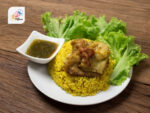
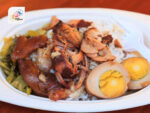
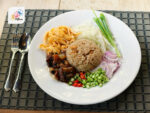
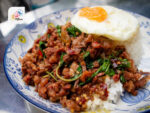
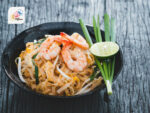
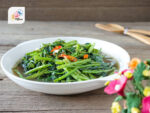
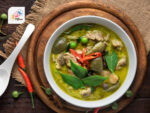
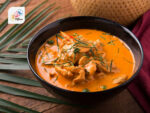
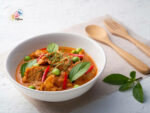
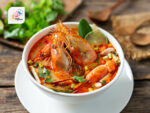
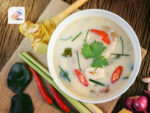
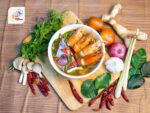
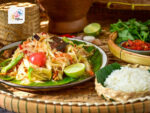
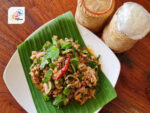
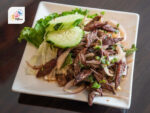
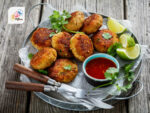
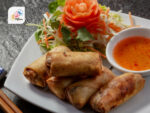
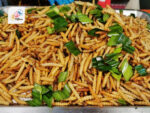
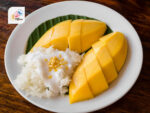
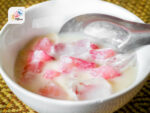
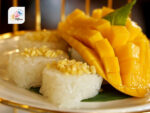
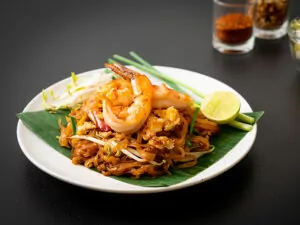
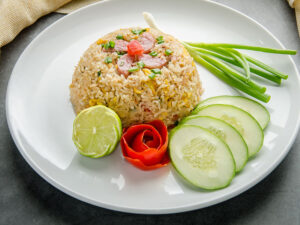
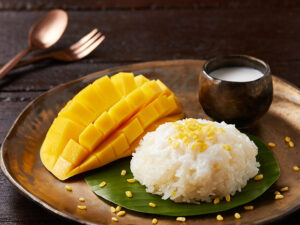
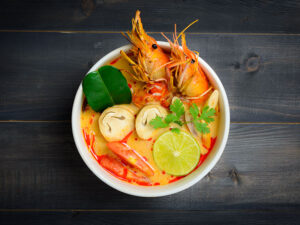
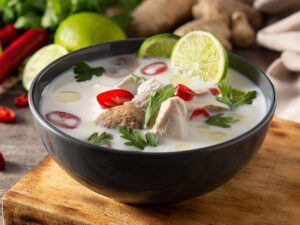
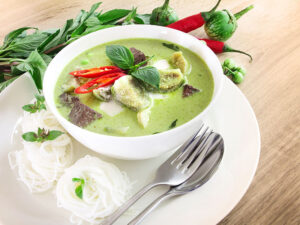
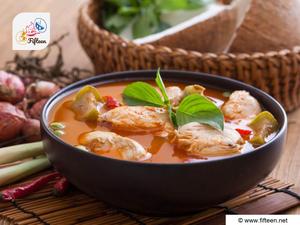
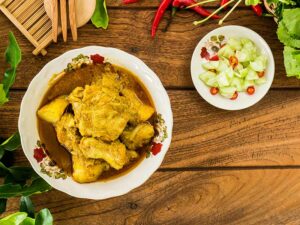
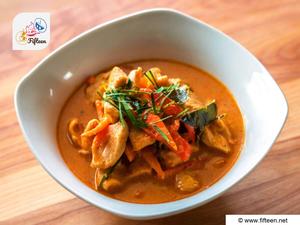
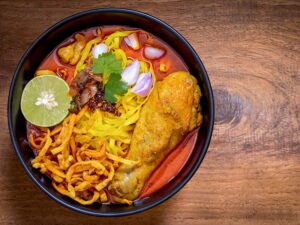
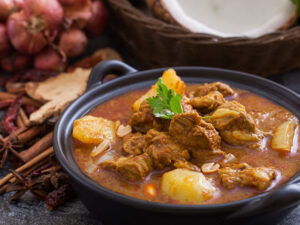
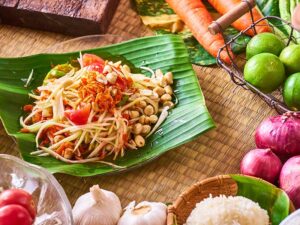
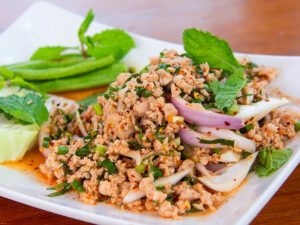
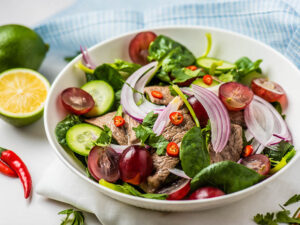
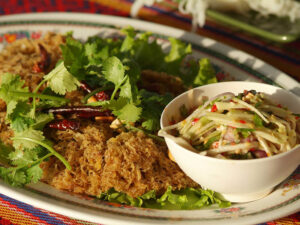
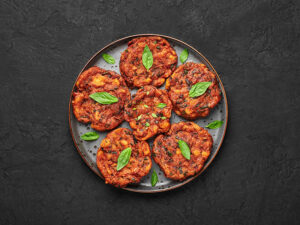
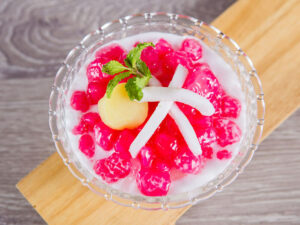
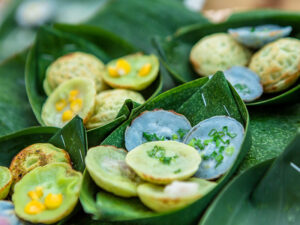
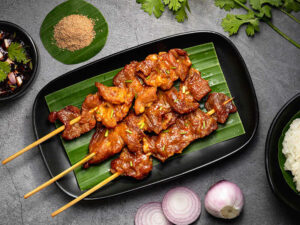
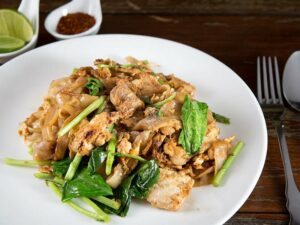
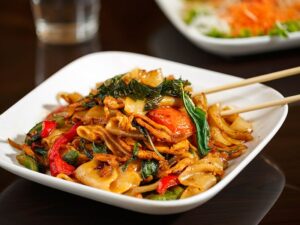
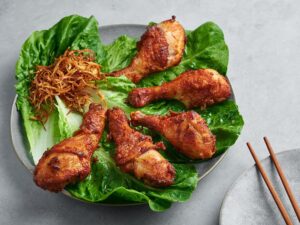
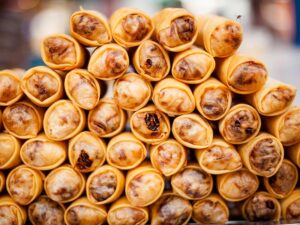
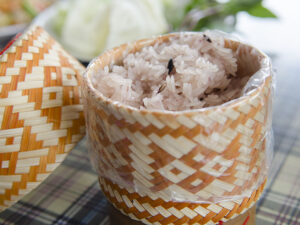
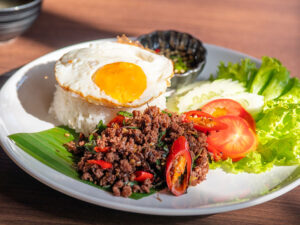
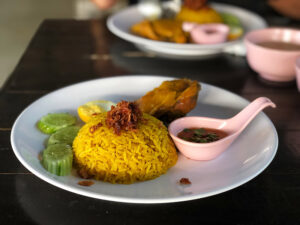
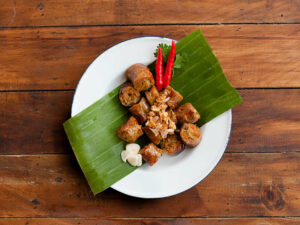
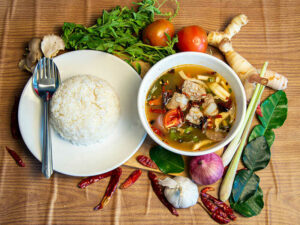
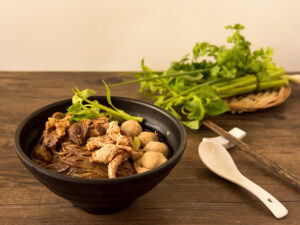
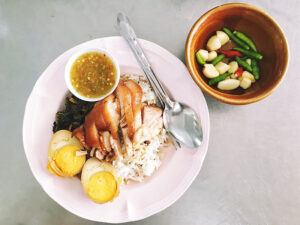
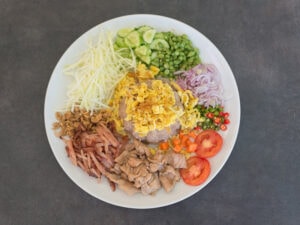
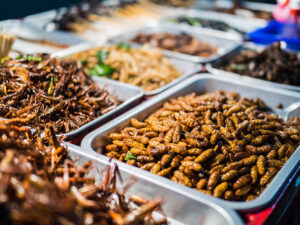
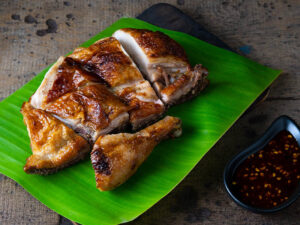
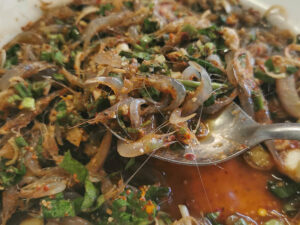
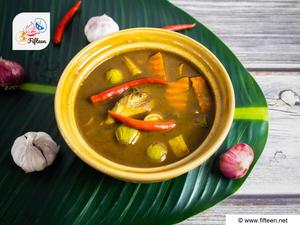
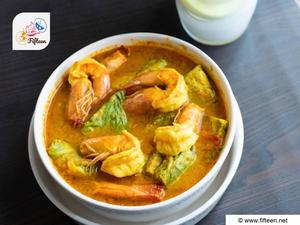
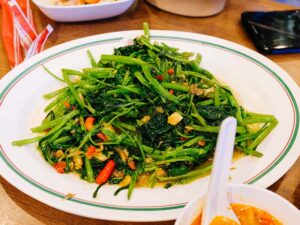
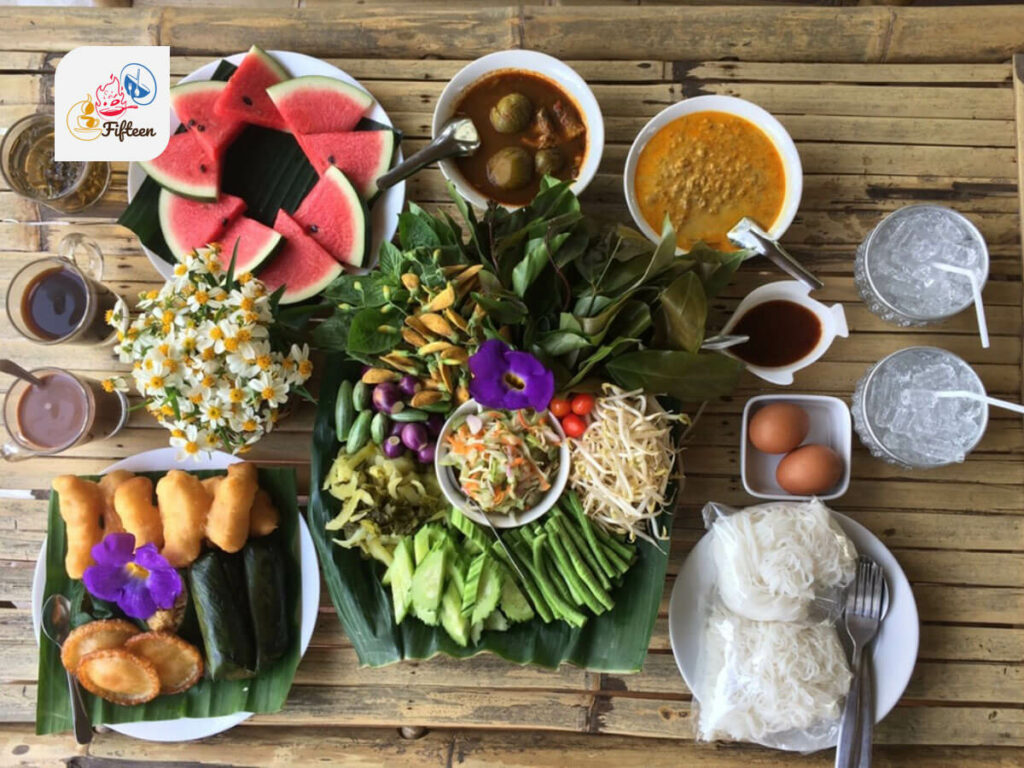
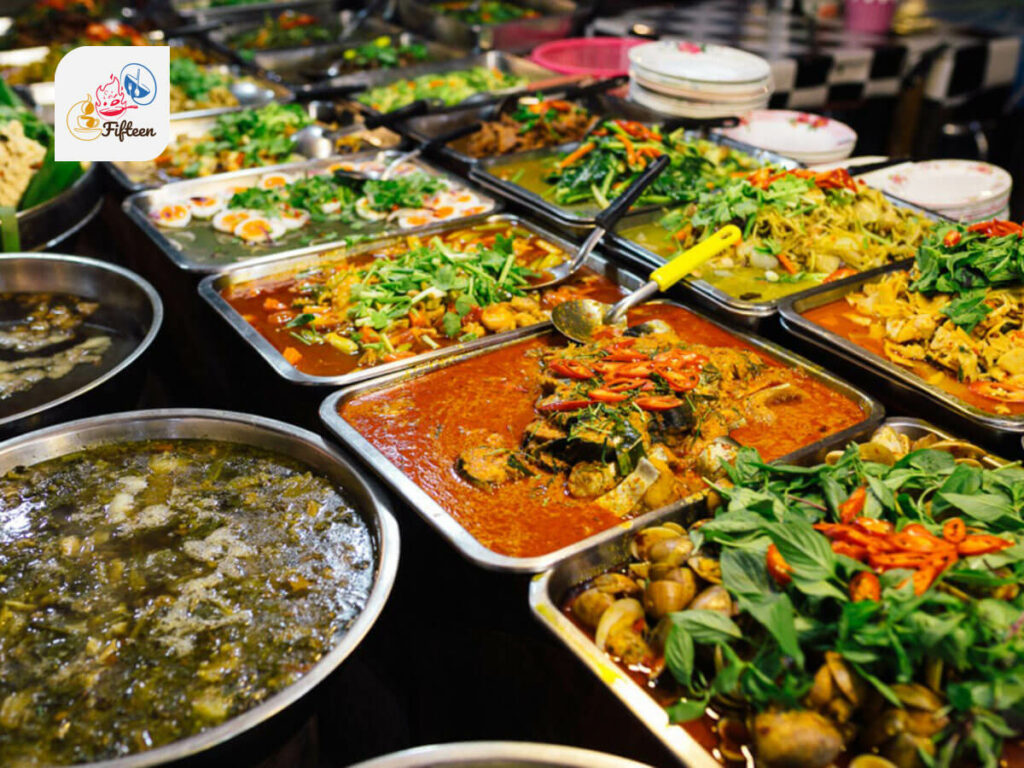
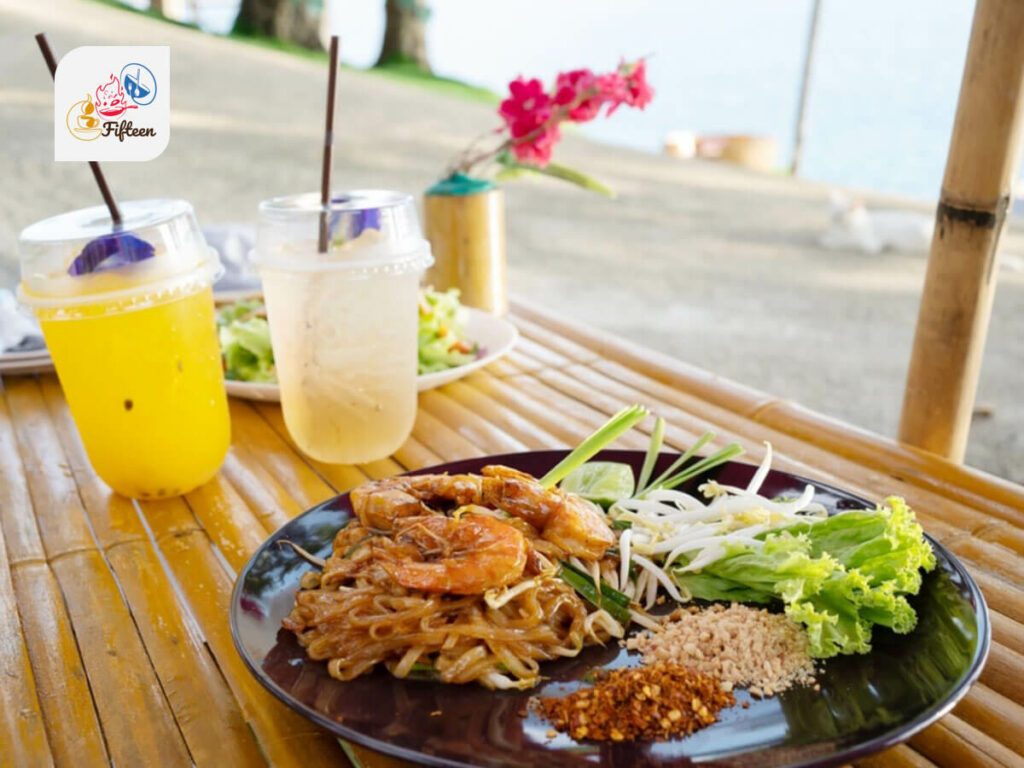
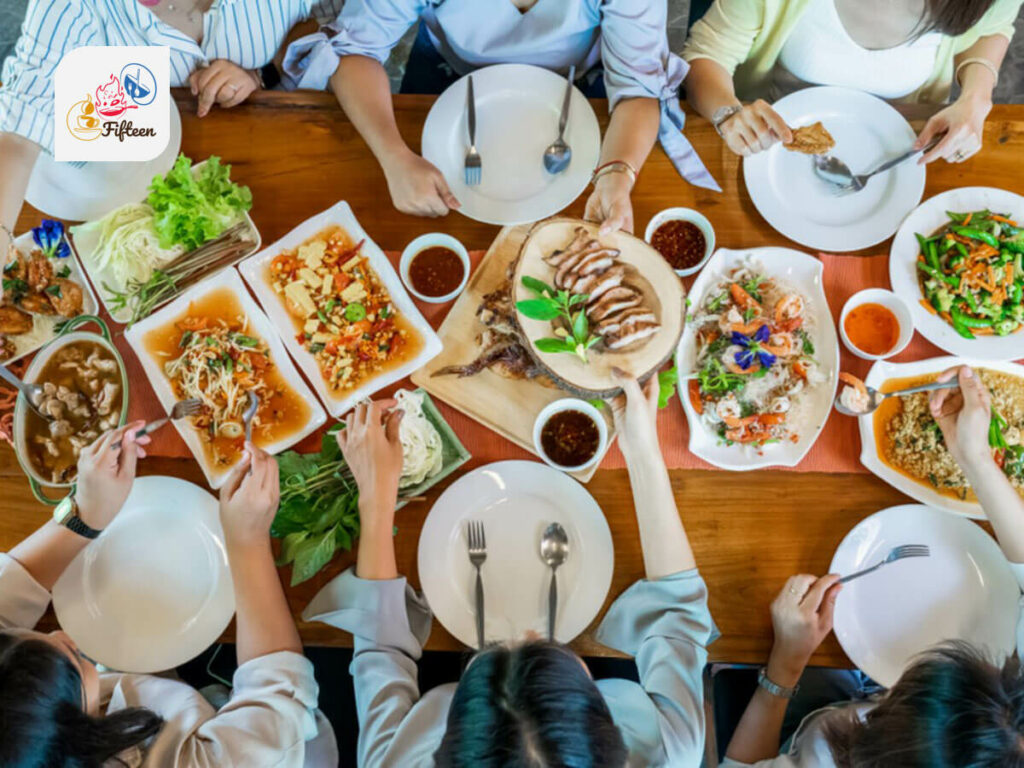
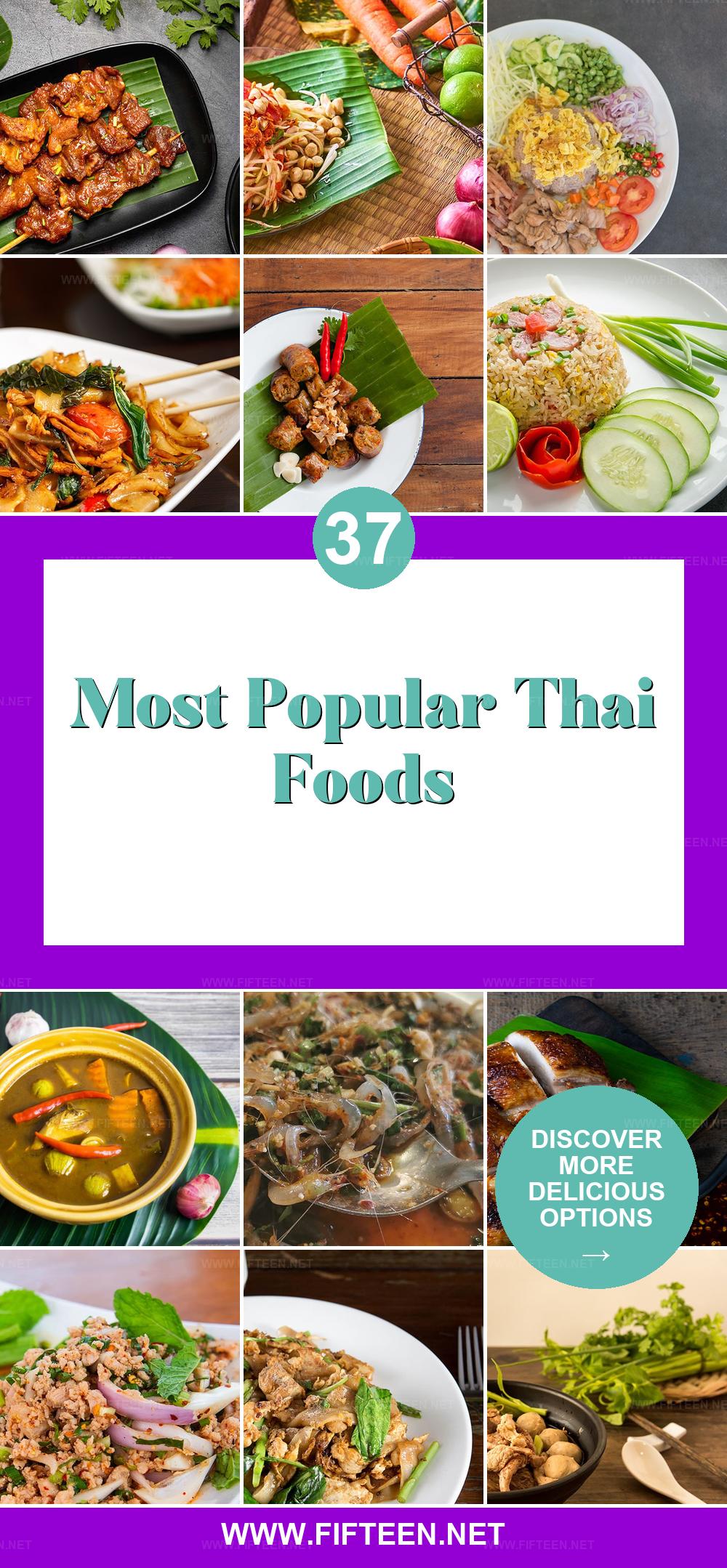
Jamie Scott
Editor in Chief, Senior Content Writer
Expertise
Home Cooking, Meal Planning, Recipe Development, Baking and Pastry, Food Editor, Cooking-video Maker, Western Food Evaluation Expert
Education
Le Cordon Bleu College of Culinary Arts
Local Community College, New York, NY
Jamie Scott is a skilled culinary expert and content creator specializing in Western cuisine. With over 15 years in the culinary field and formal training from Le Cordon Bleu, Paris, Jamie deeply understands how to blend nutrition with delicious flavors. His passion for cooking matches his commitment to making healthy eating accessible and enjoyable.
On Fifteen.net, Jamie brings a fresh perspective to classic dishes and beverages, offering readers insightful recipes, cooking tips, and a fresh view on meal planning that emphasizes taste, health, and simplicity.